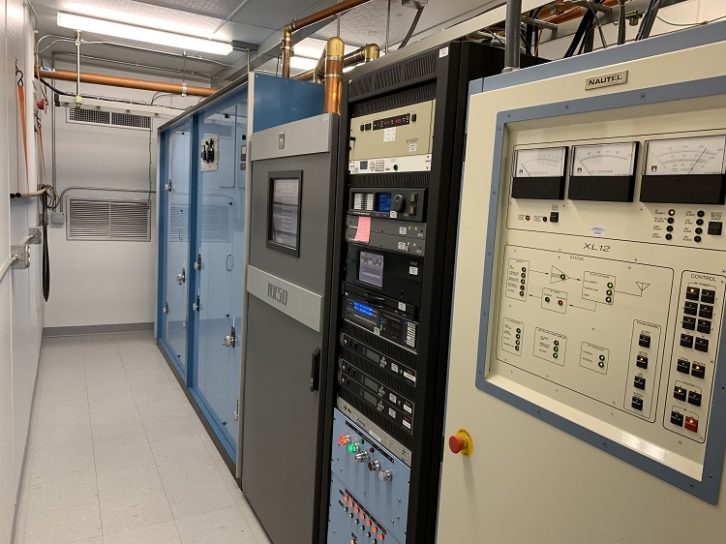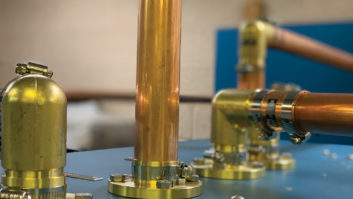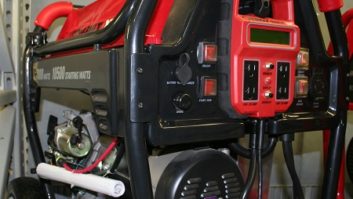
From time to time, my travels take me to transmitter sites of radio stations that are not part of our company, because I have been asked to come in and do some antenna work or perform a due diligence inspection.
Some of these sites are designed, built and maintained well, a credit to those responsible.
Other times, sadly, what I find is anything but.
Many of these facilities are run down, overgrown and infested with insects and rodents. Some are downright hazardous to be in or even around.
The list of issues can be quite long, including weeds, brush or even trees grown up in the tower base areas; base fencing that, if it exists at all, is damaged or deteriorated; transmission lines falling off the ice bridge or supports; tower paint that has faded far out of tolerance and/or is flaking off; infestations of mice and other rodents in transmitter building and equipment; evidence of snakes, spiders and flying, stinging insects in residence … and on and on.
Sometimes, the equipment and facility wiring is in bad shape.
I see electric panels with the covers removed and wiring exposed, audio and remote control wiring is hanging loose with connections twisted together. I’ve seen transmitters with side and back panels removed and interlocks jumpered out so that lethal voltages are exposed. I’ve seen phasor cabinets with their doors removed and RF components exposed for anyone to touch.
How does this happen?
STATE OF DECLINE
Sometimes the answer is obvious. The station is in a state of decline, barely hanging on in a small community with little business and competition coming from several other directions. In those cases, there’s often no money to spend on maintenance, and the situation becomes one of self-perpetuating decline.
Other times it’s not so much a matter of money as of resources. A solo engineer, employee or contract, is stretched between many facilities, oftentimes scattered over a large geographical area, competing for attention and each receiving very little.
And sadly, at times it is what I would characterize as indifference. A person charged with the care and feeding of the site or station just doesn’t care and does the bare minimum to get by. The station is on the air, and nobody sees the transmitter site but the engineer; so no one is the wiser that there are big problems there resulting from neglect or worse.
Fortunately, these situations are by far the rare exception, but they do exist.
In a lot of cases like those I’ve described, the bones of what used to be are still visible.
At one time, it was a very nice, well-engineered facility that was undoubtedly well maintained, the pride and joy of the engineer given charge of it.
And unless there are structural or other issues that go beyond cosmetics, there often is hope for such a run-down and neglected facility. It may never shine as in its glory days, but it can be a safe, functional, well-maintained, reliable transmitter site.
STATE OF HEALTH
There’s a psychological element to such a situation that goes well beyond the physical condition of the site.
[Read more articles from award-winning engineer Cris Alexander.]
The worse shape a facility is in, the harder it is for even the most dedicated engineer to gin up any level of concern. It looks hopeless, so in his or her eyes, it really is. At some point, the roof will fall in and nature will reclaim the place, leaving little or no trace that it was ever there… or so it seems.
But clean the place up, plug the holes, remove the critters and their leavings, and that same engineer starts to feel better about the place, becoming hopeful. Maybe he or she even begins to take pride in it.
In years past, an FCC agent in charge of a western field office was the self-described “master of the ten-minute inspection.” He was a great guy, super to work with and always helpful and courteous.
If he walked into a transmitter site and found it clean and well-maintained, he wouldn’t look very hard for minutia or hidden violations. It was his view that if the company and engineer in charge cared enough to keep the place clean and maintained, it would very likely be in compliance with the rules.
He was right. While I can’t speak for current district Enforcement Bureau people, who might not admit to it anyway, I suspect they would agree.
So there may be another benefit to sprucing up a run-down site.
I mentioned the self-perpetuating nature of neglect. It also works in the other direction, although it requires some input of energy. If a facility is in good shape, most engineers will want to keep it in good shape or even improve it. We like to feel good about the facilities we maintain; and like it or not, those facilities do reflect on us.
The point is that if you have in your area of responsibility a site that is in some state of neglect or deterioration, you can very likely reverse it, without spending a lot of money. That reversal will pay big dividends, both in your own attitude, in the longevity and reliability of the facility and even in the sound and performance of the transmitter signal.
Start with a “to do” list developed by taking an objective walk-through of the site. What are the problems and issues?
Take the list and prioritize it logically. For example, if there is a rodent or insect infestation, first figure out where/how they are getting in and deal with that before you start to work cleaning up the rodent or insect mess or you’ll have to do it twice.
A good trick is to go to the site at night, and turn on the lights inside the building, tuning house or ATU. Then go outside and shut the door, with all outside lights off.
Wherever you see light escaping, even a pinhole, is a potential entry point for critters and bugs. Of course there may be entry points beneath, perhaps at a conduit or telco cable entry penetration where the light trick won’t help you, but those should be readily identifiable.
Plug the holes, then suit up (Tyvek suit, gloves, mask and eye protection) and start cleaning. Remove the bigger stuff by hand, then use the shop vac, then go to (safe) solvent cleaners/disinfectants and paper towels.
The work may take some elbow grease, but when you’re done, you’ll be amazed how much better the site looks and feels!
After that, focus on prevention. I’ve found mothballs help keep the critters away (they help keep me away, too, but it’s a small price to pay). Clear vegetation from the building or ATU cabinet, and put out an insecticide barrier, replenishing it regularly. An herbicide can also be applied to keep vegetation from growing back up close to the structure and providing critters a close-by habitat.
A lot of sites, both AM and FM, have good bones. Even if they have fallen into neglect, they can often be restored to a condition that an engineer can be proud of, despite the equipment being decades old. In most cases, the result is well worth the effort.
Cris Alexander, CPBE, AMD, DRB, is tech editor of RW Engineering Extra. He is the director of engineering for Crawford Broadcasting.











